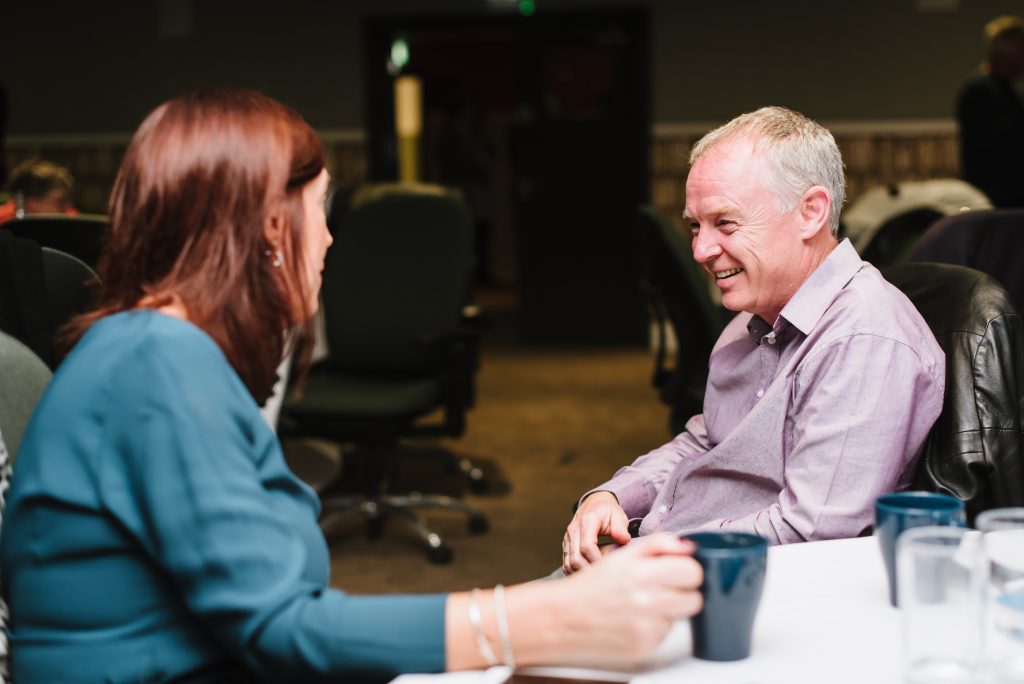Which comes first: The company mission or the structure?
Should you structure your organisation around the company mission or vice versa? We think the company mission has to come first, every time. Read on and find out why.
Imagine you’re making someone a cup of tea. You have all the right ingredients – milk, teabags, cup, kettle. So you go ahead and make one. But when you serve it up, the drinker grimaces. For them, it’s too strong with not enough milk.
If you asked that person beforehand how they take their tea, they’d tell you they like it weak and milky. You adjust your process accordingly; you take the teabag out promptly and add extra milk. The tea drinker gives it a thumbs-up.
OK, so running a business is a little more complex than making tea. But in any process, if you’re not clear on what the end result should be, you won’t be able to put the right elements in place to get there. You need to know what you’re going to do before you think about how you do it.
Company mission first and foremost…
This is why People Director Suzanne Wilkinson believes the mission of a business should come first. ‘When I go into a business, the first questions I always ask are: “What is this business’s overall vision?” and “What problem are you there to solve?”’ she says.
Most organisations start off being fairly clear about the problems they solve – but this can get diluted over time. ‘If external things change the problem may change too,’ says Suzanne. ‘Revisiting the mission can ensure it’s still relevant.’
…Followed by the business plan…
From the ‘what’ then follows the ‘how’. ‘Once you are clear on the mission, there should be a business plan in place to deliver it, over the next 12, 24, or even 60 months,’ Suzanne explains. ‘What things do you need to do to make that happen? That’s really crucial.’
The business plan should define all of the individual steps that need to take place, in the right order, to achieve your goals, with Key Performance Indicators (KPIs) to help measure and benchmark your progress.
People Puzzles uses a ‘target wheel’ to help clients plan growth, and ultimately, plan the company structure. ‘Our wheel is a really helpful way for business owners to understand how the shape of the business will change over time,’ Suzanne says. ‘So if you want to make £10m this year and £50m in five years, how will you grow your infrastructure? You’re unlikely to do that with what you’ve got in place today. For example; you may need to diversify your offer and/or increase your headcount.’
…Then the structure
Then – and only then – are you in the right place to think about structure. You’ve defined the needs of the business and are ready to look for the best way of organising the work to fulfil those needs.
Remember to account for growth!
Growing companies often experience a ‘crunch’ point (or even more than one) where a restructure is necessary. ‘When the business grows and develops, you usually need more people to scale up, diversify or expand,’ says Suzanne. ‘That’s when you need to think about structure; how to split the roles and accountabilities,’
Growth can cause other effects that you might not anticipate, such as dealing with increased complexity and greater numbers of people. ‘Communication, for example, can become a challenge,’ says Suzanne. ‘In a small business you talk to two or three people to get a job done, but when you have thirty people, you need a different approach.’
Other considerations
Another challenge is ensuring everyone has clearly defined roles. ‘People need to know what each other does and how their roles combine to achieve the business goals,’ says Suzanne. ‘Whether you have a flat structure with few reporting layers, or more of a hierarchy, it’s important that people understand how the business gets things done!’
It might take a few attempts to nail the structure, but with a plan in place, you’ll be in a much better position to get it right, move forward and achieve your business goals. You might even have time to make that perfect cup of tea.
Call us on 0203 239 3307 to find out how People Puzzles works in partnership with ambitious businesses to help them structure their teams around the business goals.
Suzanne Wilkinson, People Director


